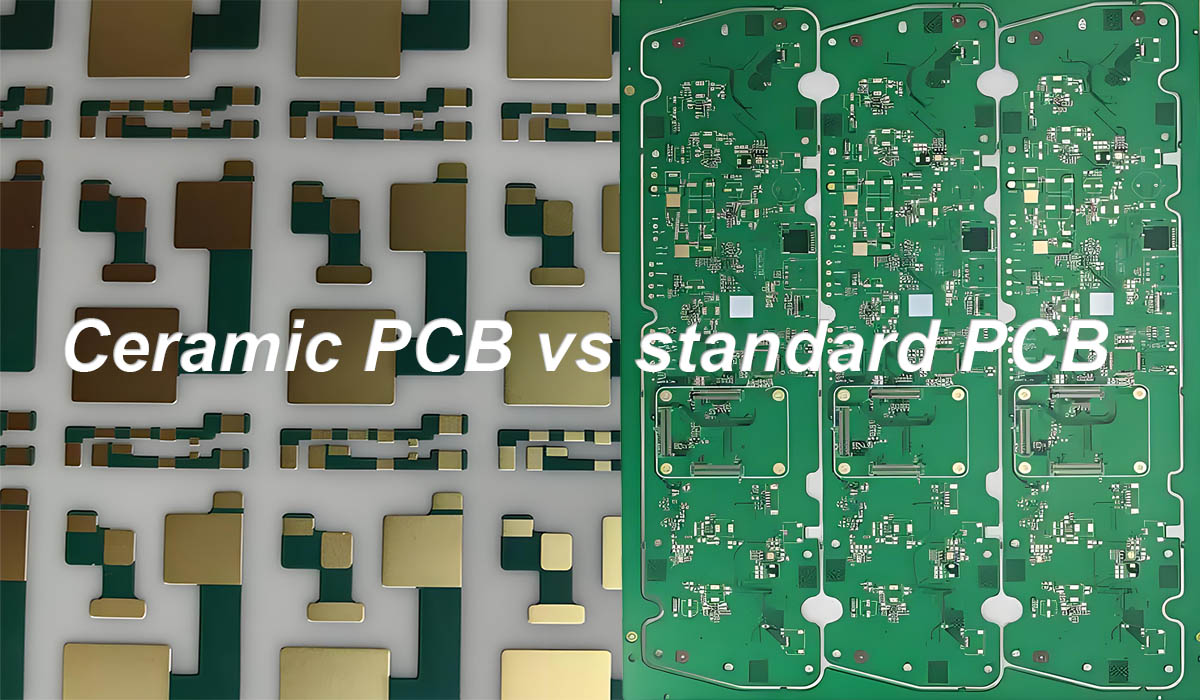The competition between ceramic substrate and standard PCB substrate on the market has become fierce. Now let's compare the most common PCB substrate and ceramic substrate products on the market.
Price comparison between ceramic substrate and standard PCB substrate
Material price is a major aspect for manufacturers and sellers to make profits. The price of ordinary PCB substrates on the market will also vary according to the material. For example, the price of FR-4 substrate 0.3-0.5mm thickness is 50~80usd/square meter. The price of epoxy resin substrate is not much different from that of chemical fiber board. Epoxy resin 3mm yellow fiberboard is also 4usd/Kg. Of course, if the area of the selected board is larger, its price will also change relatively. For example: 3mm 500*1000 yellow epoxy resin price is 10usd/sheet. The price difference between these two sides is also based on the thickness, size, and different processes of the board.
The price of ceramic substrates today is also uneven. It requires different prices according to the thickness, material, and production process of the ceramic substrate. Among them, ceramic substrates are divided into 92 alumina ceramic substrates, 95 alumina ceramic substrates, 96 alumina ceramic substrates, and 99 alumina ceramic substrates. Of course, there are also silicon nitride ceramic substrates and 99 aluminum nitride ceramic substrates. The prices of these ceramic substrates are based on the thickness and size of the ceramic substrates. For example, each 40*40*2mm IGBT substrate is about 0.5USD. The price of aluminum nitride ceramic substrates will be relatively expensive. The price of 0632*0.632*0.2mm aluminum nitride ceramic is basically around 200 yuan.
From a price comparison alone, the price of the same volume standard PCB substrate is much cheaper than that of the ceramic substrate. Relatively speaking, it is more economical to choose a standard PCB substrate.

Ceramic substrate
Performance comparison between ceramic substrates and standard PCB substrates
In standard PCB substrate materials, cardboard, epoxy resin, and fiberglass board are used. Except for fiberglass board, the rest are organic matter. Therefore, it is easy to react chemically under the irradiation of cosmic rays, changing its molecular structure and causing the product to deform, so it cannot be used in aerospace.
Compared with ceramics, standard PCB substrates have lower density and lighter weight, which is conducive to long-distance transportation. Cardboard and epoxy resin boards are highly tough and not easy to break.
However, standard PCB substrates cannot withstand high temperatures. The ignition point of paper is 130°C, which is quite low. Even if anti-high temperature materials are added, it cannot change its characteristic of not being able to withstand high temperatures. The ignition point of most epoxy resins is around 200°C, and its high temperature resistance is also very weak. Finally, there is the fiberglass board. FR-4 fiberglass board is composed of high-temperature resistant glass fiber material and high-heat-resistant composite material, but it is not advisable to use glass fiber material.
Ceramic substrates are inorganic products that are corrosion-resistant and high-temperature resistant. They can withstand cosmic ray irradiation and are suitable for the selection of materials for aerospace equipment. Ceramic substrates have high thermal conductivity. For example, the thermal conductivity of aluminum nitride ceramic substrates is as high as 170~230W/M.K. The thermal conductivity of standard PCB substrates is 1.0W/M.K. The thermal conductivity of ceramic substrates is about 200 times that of ordinary PCB substrates. It is undoubtedly a blessing in disguise for those who need to conduct high heat.
The ceramic substrate itself is an insulating material, and no insulating material is required in the process of making ceramic substrates. In the ceramic substrate products produced, the bonding strength of ceramic and metal titanium can reach up to 45MPa, and metal copper and ceramic have a more matching thermal expansion coefficient. Under high temperature conditions, the ceramic substrate and the metal layer can be firmly combined together, and the metal wire and the ceramic substrate will not fall off.
Although the ceramic substrate is brittle, it has high mechanical hardness and low dielectric constant, and can be used at high frequencies. If used in the electronic communications industry, it can greatly reduce the signal loss rate.
The ceramic substrate is resistant to high temperatures and has a breakdown voltage of up to 2wV high voltage. When facing sudden high voltage, it can not only ensure the normal operation of the equipment itself, but also ensure the safety of the operator.
The ceramic substrate has stable chemical properties and can be widely used in electronic products that are corrosive or need to be immersed in it for a long time, such as automotive LED sensors, and has stable and reliable performance.
In general, ceramic substrate products and standard PCB substrate products have their own advantages and disadvantages, and they will have their own broad living space in different fields. However, with the market demand, the application of ceramic substrate products will be more extensive. As an emerging product with excellent performance, it will be more competitive in the future market.